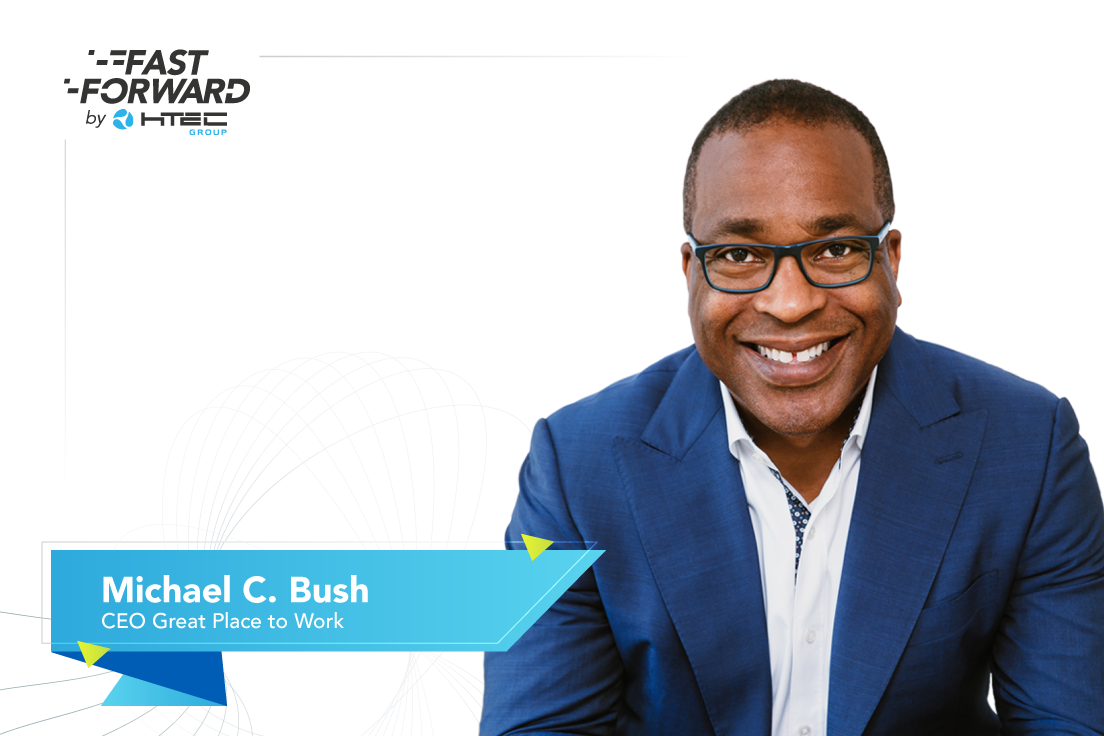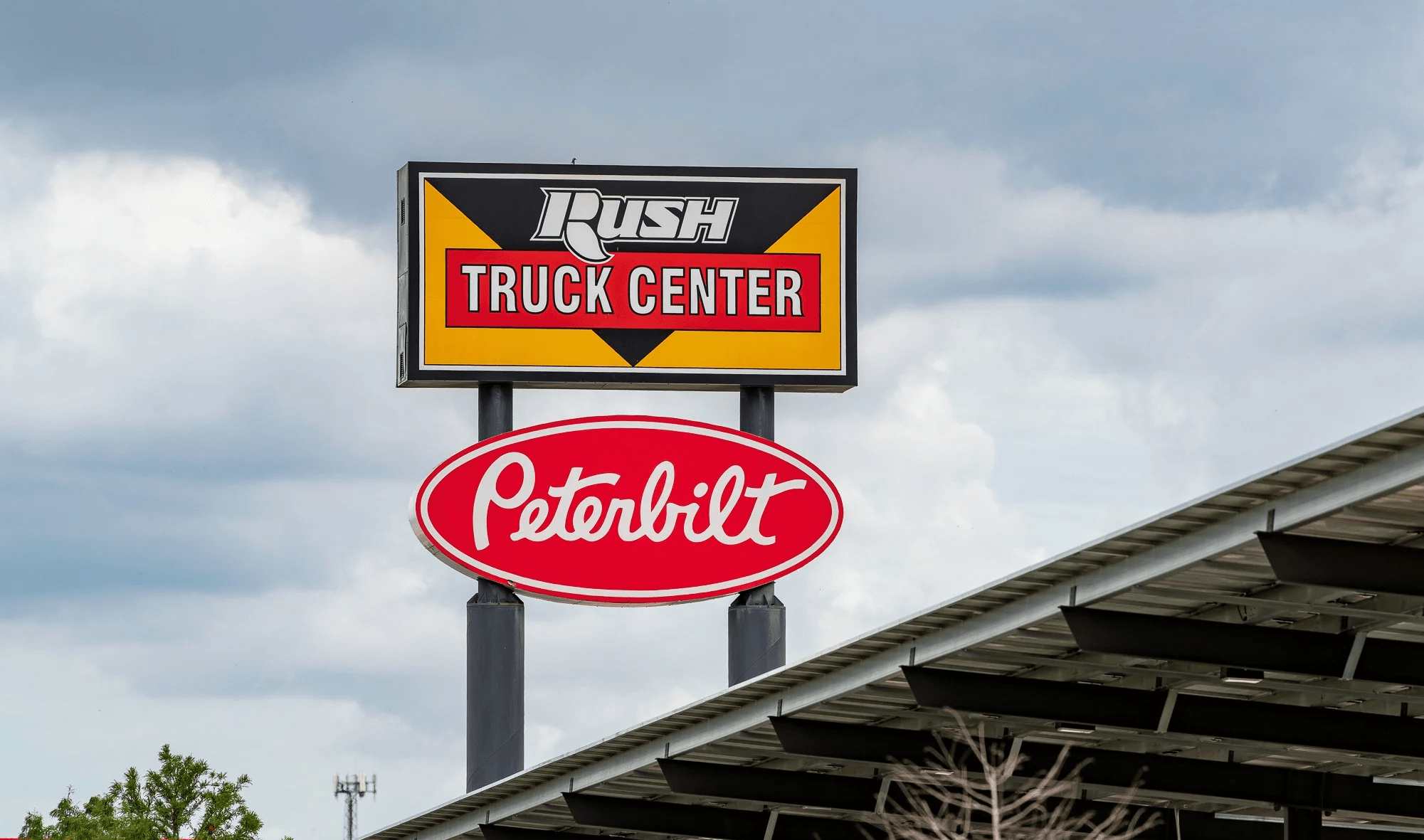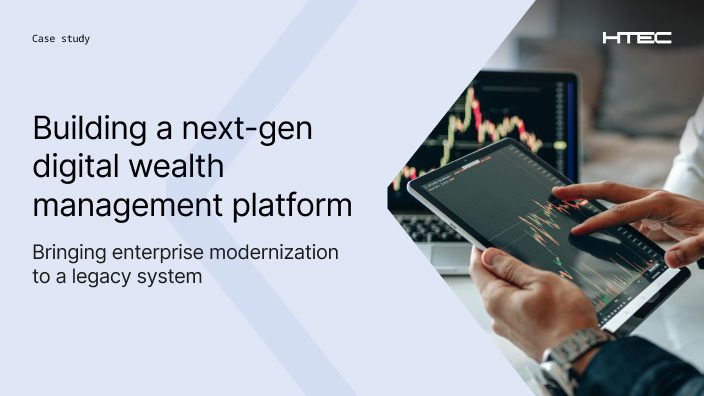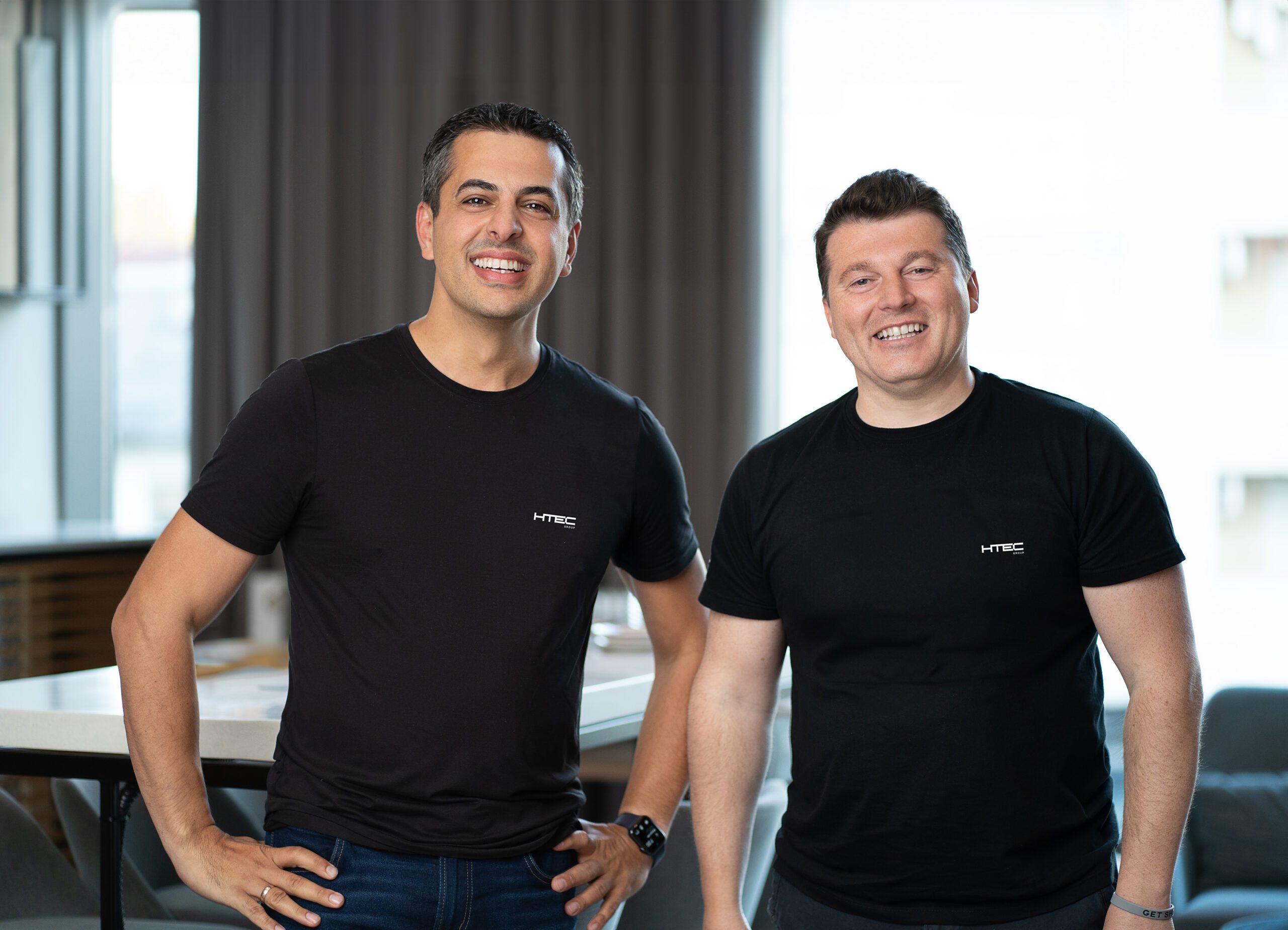“The difference between an employee who was having a great experience and an employee who wasn’t, was the leader. As a leader, you can create a great experience or you can destroy all motivation that a person can bring to work every day.”
— Michael C. Bush —

Interview with Michael C. Bush
Scaling business after funding is probably one of the hardest things, especially for first-time startups.
If startups are like children, full of freedom, creativity, experimentation, and high hopes, then scaling is like puberty—the greatest transformation of one’s life marking the entrance into the adult world.
This transformation and the velocity at which it unfolds is one of the most fascinating phenomena of our time. Fast Forward Stories is our attempt at understanding the intricate transformations that happen at the intersection of technology and society.
Since every success story starts with great people and their big dreams, let us begin with an exploration of what great leaders are made of and how to become one of them.
Oakland, California @ Great Place to Work — It was a sunny day in Oakland when I set out to meet and talk to Michael C. Bush, the CEO of Great Place to Work and one of the world’s most renowned experts on corporate culture and leadership. What entails is the conversation we had about scaling businesses, company culture, innovation, workforce of the future and what it means to be a great leader in the tumultuous times of high growth and innovation.
In the beginning was the Data
Michael’s story at GPTW begins 4 years ago when he got hired by the company’s founder, a man called Robert Levering who wrote a book over 20 years ago titled The 100 Hundred Best Companies to Work for in America, which is really what started the business of measuring the employee experience. Known for his reputation of doing company turnarounds and success in selling businesses, Michael was hired to sell the company.
However, being the shrewd entrepreneur that he is, he quickly realized that the company had what no other company in the world had—a tremendous amount of data about the thoughts, experiences, hopes, and wishes of working people all around the world. Over a hundred million employees were in the database!
Six months later, together with his partner, Michael bought GPTW and set out on a journey to make the company what it is today — the number one authority on corporate culture, surveying millions of people around the world about their jobs and companies they work for, producing the annual Fortune 100 Best Companies to Work For list as well as the analytics and coaching necessary for the positive transformations of involved workplaces.
When you analyze vast fields of data, recurring patterns and general sentiments start to emerge. What the data revealed was:
“#1, that people are essentially the same in terms of what they expect around the world #2, if you looked at the difference between an employee who was having a great experience and an employee who wasn’t, it was the leader.”
The change starts with a leader
Armed with the relentless truth of data, Michael set his company on a mission to help leaders become better at their job, which is to motivate and engage people and create great places to work for all.
“I also knew that, from my own experience, if we can create a great experience for people, the financial results will be outstanding and they would stay outstanding. But so many people find it hard to accept that you can turn business around, you can create growth, simply by the experience that people are having. I knew the power of it and loved the idea of using data to help other leaders learn about that power and achieve outstanding business results by treating people great at the same time.”
Michael explains that there are things we all do to make someone feel respected or listened to or that we are being fair, honest and transparent. There are things we do to make people feel more of those things or less of those things and that is why the data is very powerful.
“You can actually see the experience you are creating for others. And because we’ve been doing this for so long, we know what to suggest to a leader to create a different experience. It’s easy to go through life just being yourself. It’s harder, as a leader, to always be looking to change and improve.”
Leaders react differently to the feedback they get from GPTW. Many are genuinely excited about the change they need to make, there are some who are curious about it, sometimes they just want to know what is in it for them, and then there is a group of leaders who have no intention of changing whatsoever.
What we all care about at work
When I asked about the most common drivers, what makes people feel satisfied about their work, Michael immediately singled out one trait that connects all the dots — people who feel pride in what they do generally tend to be more satisfied and more ready to work through tough conditions and hardship at work. This is a kind of human experience. People have a sense of making the best out of a tough situation and that pride is global. People are proud to have the job, they talk about it, they care for and feel generally cared for by the people they work with. This is very important.
The two things actually define work experience — who we work for, that’s about 70% and who we work with, the remaining 30%. Of course that salary and perks matter, but human connection, cooperation, and support are far more important
So, a lot has to do with the leader and communicating with an employee who’s doing a job that may be trivial or it seems that way, how important it is to do the job and to do it well. That’s the point of leadership.
The remaining 30% comes from who we work with and there are times, in fact, it can be flipped. Meaning someone can say: “I really don’t like the person I work for, they aren’t respectful, they don’t treat me fairly, but I love the people I work with.”
In that sense, it is not just leaders, we all have a role to play. But a leader can set an example and a standard of the desired behaviour that employees can follow.
How to scale culture-consciously
Once we reach that point when we are happy with the culture we have created, how do we keep that culture and the quality of people at scale? How do we ensure that core company values are equally distributed to new team members and teams?
The situation gets even more complicated when we start acquiring companies in different cultures. This is the burning issue of many businesses today and the central point of my discussion with Michael.
I feel like I owe you his exact thoughts on this…
“There are some great leaders like Marc Benioff at Salesforce, Aneel Bhusri at Workday, Julie Sweet at Accenture, who will all say the same thing — always hire based on values, then look at the technical proficiency, not the other way around. And do that when you’ve got 5 employees and when you have 55,000 employees. Always hire based on values.
But, the challenge is — when you’re growing fast, then, sometimes people will not pay attention to the values and take a technical skill. Because they need it and they will say: ‘I don’t have time.` In fact, you don’t have the time to take the wrong person. But that’s not the way it feels in the moment. So, it’s a common mistake at a time like now when there is very little unemployment around the world, especially for talented people.
Our survey results are showing for the first time in 2018 and early 2019 that employees feel that a lower quality of employee is being admitted into their organization. This is a global trend that employees who 3 years ago said ‘I think management does a really good job of hiring’ now are saying, in those same companies ‘They’re not doing as good a job as they used to’. It’s not technical proficiency that people are commenting on, it’s something about the people and their ability to fit and adapt to the organization.
So, hiring based on the values is always the best practice, but it’s the one that actually limits your ability to scale. Because innovation, agility, adaptability, excellence, all those things come from people having a common set of beliefs about the customer, about how you treat each other, about integrity, how decisions get made, and what the priorities are in the organization. And as most people know who has had some experience at work, when it’s time to terminate an employee, it’s rarely because of their technical proficiency. Normally there’s something else. And people will say ‘They just didn’t fit in here’, while they’re really commenting on the culture and the values.”
Innovation by all
From here, the talk naturally leads to the concept of “Innovation by all”. Innovation is what matters the most today. Something that GPTW’s survey data shows as well. To become better at innovation, organizations need to find great ideas and be able to implement them quickly. And the way to find great ideas is to have many many ideas. To find one good idea you need a thousand. The only way you can get a thousand is from all the people producing ideas.
“Companies normally ask for ideas and never give employees any feedback about those ideas — why they were accepted, tried, or rejected. That feedback is very important.
We studied this phenomenon and came up with a concept of “Innovation by All” that everybody who has a smartphone should be innovating on your behalf in the organization. That’s the notion of it.” — Michael remarked.
Transparency is important, sharing of information, and fairness. And then this notion of emotional, psychological and physical safety. It’s the best predictor of earnings and innovation. If someone feels like they don’t matter as much as other people or their pay is not fair or promotions are unfair then they will feel unmotivated to produce and share ideas.
The market has responded very well to this concept because it is what every CEO needs. They need a lot of ideas and they need people who will quickly try ideas, which means agility.
Other benefits are important, but employees already expect them.
According to Michael, “Human connection is far more important than pay and benefits in the long term. People will leave for more pay, but they’re looking for meaningful work, people that they enjoy working with, and more importantly, a leader who wants to develop them and cares for them to improve which shows they matter as a person. They want those things far more than just the benefits.”
Startup approach to innovation and agility at scale
What Micheal defines as the main issue with innovation is that when a startup reaches a certain number of people they cannot experiment quite as much and in the same way as they used to. It is easy to be agile when you are just a few people. When the organization hits 50 people, it begins to change because at that point you need people who can inspire others, develop others, teach others, recognize others, reward others, and you need to attract people who are good at doing that. As you grow, that just continues.
“Because of the cash flow, some part of the business has to be stabilized and produce cash to fund additional innovation. So that business is no longer abandoning and trying new things, it’s proven to be offering a product or service that’s useful, now you need a different kind of behavior, the one that can sustain, be stable, reliable, repeatable and predictable so it can provide cash for the parts of the business that are still full of high expectations and new products and R&D and things like that. This requires often a different kind of leader.”
As some of you may know from experience, this is a breaking point for many startups.
At that point, Michael advises, the founder who was really good at fostering innovation and early entrepreneurship needs to either get coaching on how to run a tight ship on a larger scale, which requires procedures and structures in place, or they need to give up the position and let someone else take over.
“If it’s a venture capital-backed startup then that founder is going to be replaced by someone who’s better at building structures that will enable you to really know where the business is at all times and have more control, be more disciplined about spending, and also better at holding people accountable, and managing projects, and getting work done through people. It’s a transition that’s very hard for technical, especially tech founders.”
VC influence on startup culture
When venture capital comes in how does it affect the company culture and the psychology of a founder?
From Michael’s experience, VC bets on the idea and the founder’s ability to develop the idea or transform one idea into a totally different idea. When the founder proves the ability to be the right kind of leader, the relationship between VC and the founder is like heaven on earth. The founder is feeling new support that they have not had before. Not only in the capital but also new ideas and access to people and experience.
If things start going badly and the company starts losing clients, Michael advises founders to talk to VCs and their network and learn how to better navigate the allocation of capital and people. Sometimes drastic measures may need to be taken. But the most important thing is to preserve the relationship of respect, trust, and credibility between VCs and founders. If this relationship breaks, VCs will usually replace the founder.
Consultants or coaches when scaling?
Do you bring in a consultant who can help teams work better or a coach who can help leaders of teams work better?
Michael thinks that in a period of high growth, it is better to hire coaches to work with leaders. And the reason is that there is a certain leadership behavior, an ability that an organization needs leaders to develop. This ability is geared towards creating a high trust environment, where everyone feels safe, everyone feels heard, nobody feels more powerful or smarter than others, everybody is needed to achieve an impossible goal. Coaches can help leaders achieve that.
Are people afraid of AI influence on future workplaces?
As it turns out, GPTW asks this question a lot. The survey data shows that people who are in the technology business have very little fear of AI, holding a belief that AI will have a net positive impact on the overall employment. However, the rest of the world, the majority that does not work in tech, has a great fear of AI and regard it as a job eliminator. Even the jobs that AI might create down the road are far different than their current jobs so there is an element of natural human fear of change.
What Michael tells leaders is not to talk people into how great the world is going to be for them when the dream of AI is fulfilled, “Because you don’t know it and people know that you don’t, so they become highly suspicious. What we can tell them, as leaders, is that it is going to improve certain areas of our business and enable us to navigate it more successfully and if it comes to that, layoffs will be the last resort. We will provide retraining, learning new skills, and so on. This is how leaders can build credibility and trust in the time of uncertainty.”
Data science at the service of great workplaces
Speaking of AI, software, and data science, we are curious to hear about the impact that these technologies have on GPTW and its future as a company.
Having built an incredible data collection over the years, GPTW is now able to apply machine learning and AI to accurately predict employee behavior and its impact on customers and businesses going forward.
To fully leverage on the employee data and to make the discoveries and predictions actionable for the companies that care to always keep listening and improving, GPTW has built the product Emprising together with our engineering team at HTEC. Our platform thinking and big data now support GPTW’s vision to help organizations navigate their internal relationships towards better outcomes.
Michael describes our work as a huge success, resulting in the creation of an exceptional platform, Emprising, which is now being used by close to 2,000 companies in the US in less than 2 years after being brought to the market.
“The enthusiasm, entrepreneurism, and commitment that HTEC brings is the reason we have an exceptional product today. The top analytics firms in the world are using Emprising. It has been revered and reviewed as the state of the art product in capturing human experience and providing a platform for leaders to know what they need to do to create a great place to work for all and a great launching pad for ML and AI to enable the prediction about employees as well as how that’s going to impact customers.”
Michael concludes with a joke: “Without Emprising, you won’t be here today because I would be out of business and it would be a podcast about how you take a business and make sure it goes out of business. And I would be an expert on that!”
Joke aside, Emprising has helped GPTW to establish their business as a market leader in the US where it is tested, tried and endorsed by the most successful companies. It is now ready to take on the world.
Aaaaaand ACTION!
Having access to Emprising ourselves, we wonder how often we should survey our employees and once we get the results, how do we effectively go about changing the culture.
The answer is: survey at least twice a year.
Some Emprising customers, like Workday, survey every Friday asking only two questions. They get an incredible response rate of 90%. A great example of a listening culture!
Surveying employees twice a year gives us the advantage of knowing what is happening while giving our team enough time to build a strategy around the findings and implement that strategy. Then, again, we measure the effects after 6 months. Did we fix the problem?
Surveying will show us the areas where we need to go deeper so that we can focus attention in the right direction. At this point, we can reduce the number of questions and ask only the ones that will help uncover problematic issues. Pulse surveys are good for this because they are short, well-targeted, and effective.
So, when we get the data what do we do?
The questions are structured in such a way that they show the exact areas of improvement that leaders need to work on. Whether it is communication, listening, recognition and rewards, or something else—the data will tell you.
GPTW can help a leader either through a coach or an HR assistant to practice these new behaviors. And once they do, the best thing is that they can and should measure whether it was effective or not.
How do you practice what you preach at Great Place to Work?
Michael takes a lot of pride in what his team has achieved so far. When he joined GPTW, about 4 years ago, 3 out of 10 people said that it was a great place to work. In the last survey they did about a month ago, 9.2 out of 10 people said it was great! The results are published on their website for transparency. As a matter of fact, as soon as the survey is closed, the results are online and available for everyone to see.
My hope is that we all learn from GPTW and adopt the practice of surveying employees every once in a while, keeping an open mind and an honest relationship with our teams about where we can all improve. Employees like to be informed consistently about the things they do well, and the things to improve.
In the end, I leave you with a quote from Michael:
“As long as you are surveying, you will always find something you can do better. As a leader, you’re not working to get to some level, there’s always work to do. And everybody has a role to play and everybody can get better.”
Also, be sure to check Emprising and Great Place to Work and arm your leadership self with knowledge about the trends and strategies in keeping your team together, and happily so!













